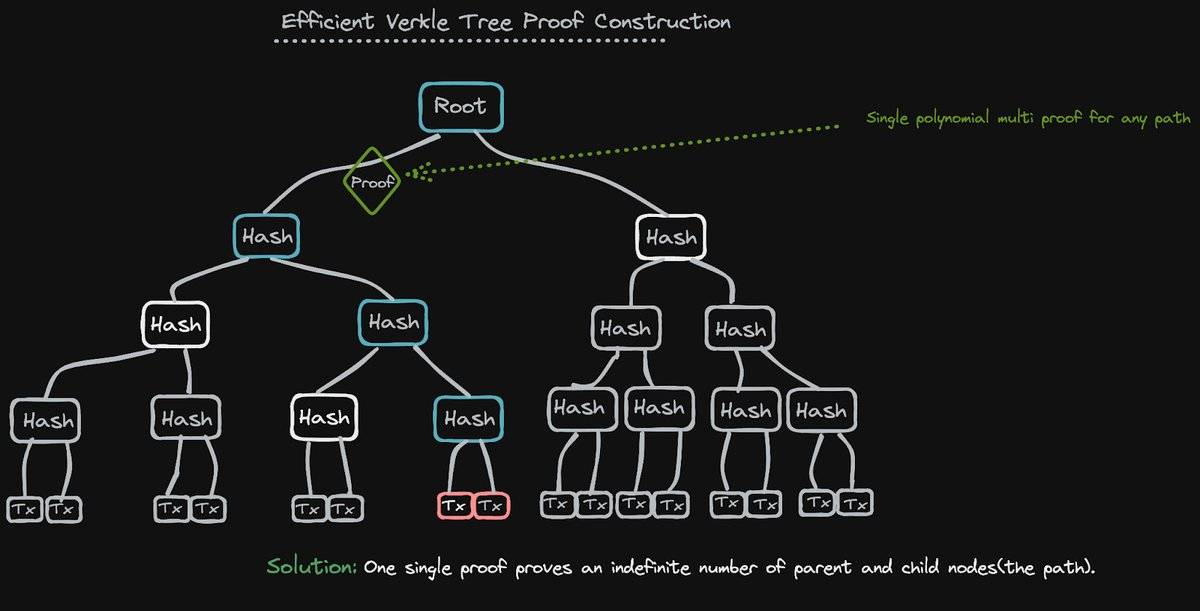Understanding ZK Cross-Chain Protocol Lagrange in 3 minutes
ZK Cross-Chain Protocol Lagrange explained in 3 minutesWritten by: Maven 11
Compiled: DeepTechFlow
Cross-chain interoperability and security have become a challenge for current blockchain technology, and ZK startup Lagrange Labs has provided its solution. Maven11, as an investing institution, elaborated on the importance of Lagrange in this article, which details the core concept of Lagrange protocol, the verification process, and how to use zero-knowledge proof technology to achieve trustless cross-chain operations.
Cross-chain state proof is crucial for applications in a multi-chain world. It enables applications to use verifiable chain state claims submitted by untrusted users. Use cases include multi-chain DEX pricing, yield aggregators, and loan pricing.
- Putting AI into NFT: Humans.AI – Let artificial intelligence live on in the Web3 gene pool “Digital Immortality”
- Exploring Web3 Loyalty: Addressing Challenges and Dilemmas After Project Airdrops
- BladeDAO’s Decentralized Vision: Players don’t have to compromise, together build a transparent, fair and safe gaming world.
Simply put, state (storage) proof is a proof (zero-knowledge) that proves the existence of some on-chain state on any chain. Through the magic of zero-knowledge proof (ZKP), we can efficiently and trustlessly achieve this without relying on a trusted oracle network.
Traditional message-passing protocols rely on nodes to pass information, but Lagrange takes a different approach. It allows anyone to submit encrypted verifiable information, similar to IBC relying on light clients for cross-chain verification.
In Lagrange, any cross-chain transport layer or untrusted user can submit a non-interactive proof verified on-chain. These proofs do not rely on a validator set or signature, ensuring that data is obtained directly on-chain and efficiently aggregated between chains.
The verification of Lagrange state proof involves multiple steps:
- State root verification: Verify concise zero-knowledge proofs generated by the Lagrange state committee showing the authenticity of a given state root (block header).
- Batch storage proof: Verify whether a set of declared states exists in a specific chain’s state root.
- Zero-knowledge distributed computation: Verify arbitrary distributed computations performed on-chain state.
As Lagrange state proofs are modular, the protocol can choose to use partial proofs of state, storage, or computation to customize the proof system based on its application. Existing cross-chain applications can easily improve the security or performance of their cross-chain tools.
Lagrange’s zero-knowledge big data framework utilizes dynamic data structures similar to Verkle trees, allowing applications to combine efficient storage containing proofs with arbitrary distributed computation (such as MapReduce or distributed SQL).

Using the LagrangeJS SDK, developers can easily request a state proof from any chain and specify any computation to run on a subset of stored state. This allows developers to leverage secure cross-chain state and storage proofs in user-friendly interfaces.
The Lagrange SDK also simplifies the process of simultaneously generating state proofs across multiple chains. These proofs allow DApps integrated with the Lagrange protocol to integrate multiple state verifications into a single chain transaction.
The Lagrange protocol facilitates cross-chain state verification by integrating major blockchains. Initially, it is compatible with all EVM L1, L2, and rollup. In the future, plans to support non-EVM chains such as Solana, Sui, Aptos, and Cosmos SDK-based chains.
Additionally, Lagrange is committed to improving the security of existing cross-chain bridging and messaging protocols by utilizing economic bonding assertions, and creating powerful economic single-slot guarantees of finality for Optimistic Rollups. This can significantly improve interoperability between isolated Rollups on Ethereum.
Essentially, it works by generating a ZK light client proof for Optimistic Rollups, as opposed to the “light client” implementation currently on Ethereum, i.e. Ethereum Sync Committee.
The current Ethereum Sync Committee has only 512 randomly selected validators who receive higher rewards every day to provide light client functionality.

The security of the Lagrange cross-chain state committee comes from a growing, dynamically sized set of nodes that have economic bonds, either re-staked with EigenLayeer or staked with liquidity derivatives such as Rocket Pool.

Nodes must sign every new block that achieves a final result on the chain they are proving. Unlike the 512-node limit on Ethereum’s light client Sync Committee, the cross-chain state committee supports unlimited nodes. Therefore, the collateral behind each proof can dynamically expand as needed to create secure proofs for each given chain or Rollup.
State proofs have important use cases in protocols like shared sorters, helping improve cross-rollup communication and solving oracle problems in implementations like SUAVE.
We will continue to update Blocking; if you have any questions or suggestions, please contact us!
Was this article helpful?
93 out of 132 found this helpful
Related articles
- Head DEX protocol iZUMi Finance on ZkSync: based on UniSwap V3 improvement, creating a new DL-AMM mechanism
- Weekly Preview | ACDE Conference may determine the scope of Cancun upgrade; Tokens of projects such as Avalanche and RON will be partially unlocked
- Quickly learn about 18 new projects in recent times: DeFi, games, and tools
- Recap of ETHGlobal Lisbon Hackathon: Quick Look at 5 Promising New Projects
- Token issuance of Sui’s ecological project faced setbacks including token unlocking delay and team unlocking, resulting in a difficult start.
- Listing 10 low-market cap LSD-fi projects:
- The absurdity in the Meme season: me, Ben.eth, sending money






